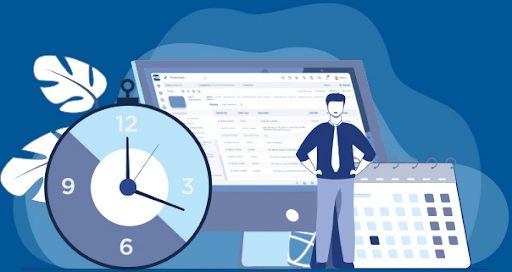Hitting peak performance in software maintenance is like navigating a complex road map – it requires careful planning, attention to detail, and strategic execution. In this article, we will explore the essential components of the . From routine code reviews to proactive bug tracking, this checklist will guide you towards smoother operations and optimized performance. Buckle up and get ready to elevate your software maintenance game to new heights!
Optimizing Software Performance through Regular Maintenance
Regular maintenance is essential for optimizing software performance and ensuring it operates at its peak. By following a comprehensive checklist, you can proactively address issues, improve efficiency, and ultimately enhance user experience.
One key aspect of software maintenance is **regular updates**. Keeping your software up to date with the latest patches and bug fixes can help address security vulnerabilities and enhance functionality. Make sure to set up **automatic updates** wherever possible to ensure timely installation.
Another important task is **cleaning up disk space**. Over time, software can accumulate temporary files, logs, and other data that can slow down performance. Regularly deleting unnecessary files and running disk cleanup tools can help free up space and improve speed.
**Performance monitoring** should also be part of your maintenance routine. Keep track of key metrics such as CPU usage, memory usage, and response times. Identify any bottlenecks or performance issues and take proactive steps to address them, such as optimizing code or upgrading hardware.
Key Areas to Focus on for Peak Software Performance
Ensuring peak software performance requires a strategic approach to maintenance and optimization. By focusing on key areas, you can create a roadmap for success that will keep your software running smoothly and efficiently.
One important area to consider is regular updates and patches. By staying current with software updates, you can take advantage of new features, security enhancements, and bug fixes. This will help to prevent issues and improve overall performance.
Another essential area to focus on is monitoring and troubleshooting. By proactively monitoring your software for performance issues, you can identify and address any potential problems before they impact users. This includes monitoring for resource usage, bottlenecks, and errors, and taking steps to optimize performance.
Lastly, don’t forget about documentation and knowledge sharing. By keeping detailed documentation of your software architecture, configurations, and processes, you can streamline troubleshooting and optimize performance more efficiently. Sharing this knowledge with your team can also help to improve overall software maintenance practices.
Implementing Best Practices for Software Maintenance
In order to ensure peak performance and longevity of your software, it’s essential to follow a comprehensive maintenance checklist. By , you can prevent problems before they occur, improve efficiency, and ultimately save time and money in the long run.
Some key areas to focus on in your software maintenance checklist include:
- Regular Updates: Ensure that all software components are up to date with the latest patches and updates to address security vulnerabilities and improve functionality.
- Backup and Recovery: Regularly backup your software data and test the recovery process to ensure that you can quickly recover in case of data loss or system failure.
- Code Review: Conduct regular code reviews to identify and fix any bugs, security vulnerabilities, or performance issues in the software code.
- Performance Monitoring: Monitor the performance of your software to identify any bottlenecks or areas for improvement, and optimize as necessary.
Maximizing Efficiency and Reliability with a Software Maintenance Checklist
When it comes to ensuring peak performance for your software, having a comprehensive maintenance checklist is essential. By following a systematic approach to software maintenance, you can maximize efficiency and reliability, ultimately saving time and resources in the long run.
One key aspect of software maintenance is regular updates and bug fixes. By staying on top of updates, you can ensure that your software is running smoothly and securely. In addition, addressing any bugs or issues promptly can prevent potential downtime and disruptions for your users.
Another important element of a software maintenance checklist is monitoring performance metrics. By analyzing key performance indicators, you can identify areas for improvement and make necessary adjustments to optimize your software’s efficiency. This proactive approach can help prevent costly errors and enhance user satisfaction.
Overall, implementing a software maintenance checklist can streamline your maintenance process and help you achieve peak performance for your software. By prioritizing regular updates, bug fixes, and performance monitoring, you can ensure that your software operates at its best, maximizing efficiency and reliability for your users.
As we round off our journey through the , we hope you have gained valuable insights on how to keep your software running smoothly and efficiently. By following these guidelines, you can ensure that your software remains in peak condition, providing optimal performance for both you and your users. Remember, regular maintenance is key to prolonging the life and functionality of your software. So, take charge of your software maintenance today and pave the way for seamless operations in the future. Here’s to a well-maintained and high-performing software system!



